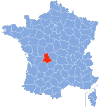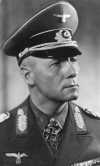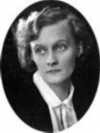Definition: (noun) A long angry or violent speech, usually of a censorious or denunciatory nature; a diatribe.
Synonyms: philippic, broadside.
Usage: Milady had listened to all this menacing tirade with a smile of disdain on her lips, but rage in her heart.
Discuss
Source: The Free Dictionary
 In 1959, parolees Richard Hickock and Perry Smith murdered Herbert and Bonnie Clutter and their two children while attempting to rob their Kansas farmhouse. Writer Truman Capote spent the next five years researching the crime and interviewing those involved, including Hickock and Smith, who were hanged for the murders in 1965. Capote’s In Cold Blood was published shortly thereafter and launched the nonfiction novel genre. What famous author traveled to Kansas with Capote?
In 1959, parolees Richard Hickock and Perry Smith murdered Herbert and Bonnie Clutter and their two children while attempting to rob their Kansas farmhouse. Writer Truman Capote spent the next five years researching the crime and interviewing those involved, including Hickock and Smith, who were hanged for the murders in 1965. Capote’s In Cold Blood was published shortly thereafter and launched the nonfiction novel genre. What famous author traveled to Kansas with Capote? 
 After nearly three decades in the German army, Rommel, who would become a famous WWII field marshal, was promoted by Hitler to the rank of general in 1939. The next year, he brilliantly commanded a panzer division in the attack on France. He then led the Afrika Korps against the Allies in N Africa, where he became known as the “Desert Fox” for his audacious surprise attacks. Allied success led Rommel to lose respect for Hitler and join a plot to remove the führer from office. How did Rommel die?
After nearly three decades in the German army, Rommel, who would become a famous WWII field marshal, was promoted by Hitler to the rank of general in 1939. The next year, he brilliantly commanded a panzer division in the attack on France. He then led the Afrika Korps against the Allies in N Africa, where he became known as the “Desert Fox” for his audacious surprise attacks. Allied success led Rommel to lose respect for Hitler and join a plot to remove the führer from office. How did Rommel die?  A year after learning to fly, aviator Eugene Ely performed an experiment for the US Navy: he took off from a temporary platform built over the bow of the USS Birmingham, anchored off Virginia’s coast, and became the first person to take off from a ship in a fixed-wing aircraft. Two months later, he performed the first shipboard landing, using the first tailhook system to land on the USS Pennsylvania in San Francisco Bay, California. He died less than a year later while doing what?
A year after learning to fly, aviator Eugene Ely performed an experiment for the US Navy: he took off from a temporary platform built over the bow of the USS Birmingham, anchored off Virginia’s coast, and became the first person to take off from a ship in a fixed-wing aircraft. Two months later, he performed the first shipboard landing, using the first tailhook system to land on the USS Pennsylvania in San Francisco Bay, California. He died less than a year later while doing what?  The second Friday in November is
The second Friday in November is  Lindgren was a Swedish children’s book author and screenwriter best remembered for writing the series of books featuring the character Pippi Långstrump, or Pippi Longstocking. Pippi, an unconventional, assertive, and extraordinarily strong girl—recognized by her fiery red hair worn in braids that stick out sideways from her head—was featured in many of Lindgren’s hundreds of books, which sold roughly 145 million copies worldwide. What other memorable characters did Lindgren create?
Lindgren was a Swedish children’s book author and screenwriter best remembered for writing the series of books featuring the character Pippi Långstrump, or Pippi Longstocking. Pippi, an unconventional, assertive, and extraordinarily strong girl—recognized by her fiery red hair worn in braids that stick out sideways from her head—was featured in many of Lindgren’s hundreds of books, which sold roughly 145 million copies worldwide. What other memorable characters did Lindgren create?